Abstract Thinking: Fanchon Fröhlich and Her Contemporaries, Victoria Gallery & Museum, Liverpool
January 22, 2024
“Drawing is a way of making an idea visible … an idea is still nothing until it is out where it can be seen”
– William Hayter, Master Painter & Printmaker
When I wrote about the artist and intellectual, Fanchon Fröhlich (1927-2016) last year, it was the first time I had heard her name. Indeed, the exhibition I reviewed then, ‘The Wrong Sex’, described her as the “forgotten artist of abstract impressionism”. It was an opportunity to learn about yet another woman artist whom art history had mislaid – and to see the painstaking work undertaken by BADA (British Art and Design Association) who were entrusted with archiving and administering Fröhlich’s extensive legacy.
Now, in a joint initiative BADA and the Victoria Gallery & Museum seek to further re-establish her reputation with a selection of her work, shown for the first time alongside leading British abstract artists of the 20th century who were her contemporaries. In doing so, we are given an insight into the British side of an art scene that has so often been dominated by American titans, such as Jackson Pollock.
This exhibition features eleven of Fröhlich’s paintings and prints together with work by eight other abstract artists, many of whom she worked alongside during her career and who became personal friends. They include names known internationally – Gillian Ayres, Sandra Blow, Peter Lanyon and William Hayter, plus other leading artists who worked in Liverpool from the 1950’s onwards.
Walking into the main gallery of this show, I was immediately struck by how well Fröhlich’s work held its place in such eminent company. Curator, Amanda Draper, feels this is particularly evident in her printmaking: “When you see her prints alongside the large Ayres piece, it is striking how strong they are and how Fröhlich’s work was ahead of Ayres at that time in being totally abstract”.
The largest painting on show is a work on paper by Lanyon, in gouache on four panels, which takes up almost the whole of one gallery wall. The design is the basis for a tile mural that was commissioned by the University for its Department of Civil Engineering and where it can still be seen. Called “The Conflict of Man with Tides and Sands”, it is a stunning example of Lanyon’s dynamic, hugely gestural painting style and of his affinity with the sea. Fröhlich worked with Lanyon in Cornwall and it’s thought she and her husband, Herbert, were instrumental in securing the commission for Lanyon.
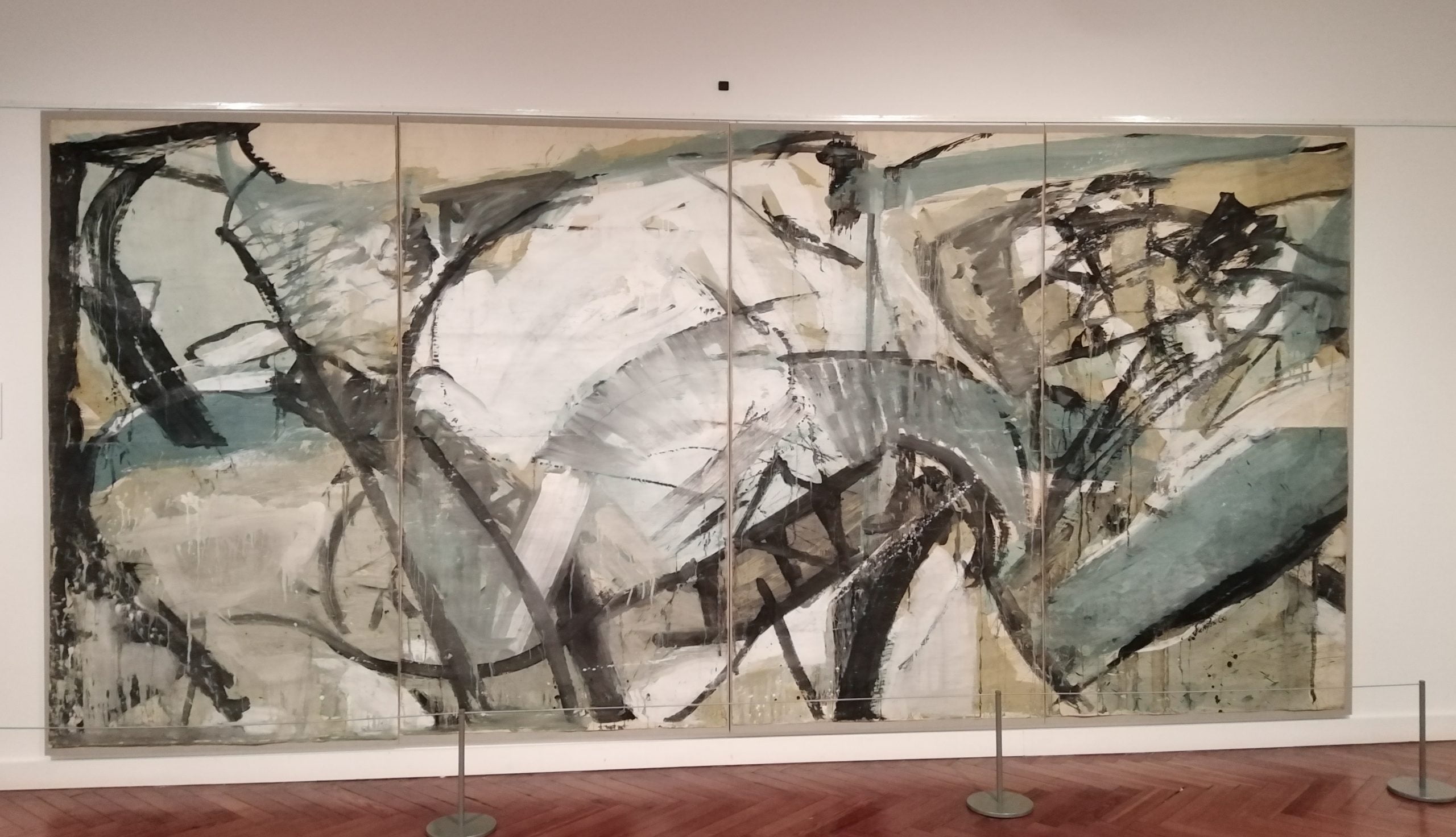
“The Conflict of Man with Tides and Sands”, Peter Lanyon, 1960. Gouache on four paper panels.
I was intrigued to know how the University came to acquire such a significant work, or any others come to that. In this case, Draper explained, it came via the tax office in 2019. It was part of the government’s “Acceptance in Lieu” scheme, under which important cultural, scientific or historic objects and archives are given to the nation (to us!) in lieu of a tax bill. Material accepted under the scheme is allocated to public museums, archives or libraries. Liverpool University was the obvious choice for Lanyon’s piece, given that the mural of the design was already there.
On the first wall as you enter the exhibition is an unusual piece by Blow, whom Fröhlich would also have known during her time in Cornwall. Its minimalism and thin washes of neutral paint (perhaps even tea, according to the wall note!) are in contrast to her earlier works, which were often thick with impasto on rough hessian – influenced by her one-time partner, the Italian artist Alberto Burri. But delicate as this piece looks, Blow herself was not precious about its treatment. Draper tells how when the Gallery asked Blow’s advice on cleaning the work given the diversity of materials, the reply that came back was “just scrub it with Vim”! The Gallery’s conservators were naturally aghast at such a suggestion, so she told them to send it to her and she’d do it herself. It came back cleaned.
American-born Fröhlich spent most of her adult life in Toxteth after coming to Liverpool in 1949 aged 22, where she met and married the eminent physicist Herbert Fröhlich, who held a senior position at the University of Liverpool. She undertook post-graduate studies at Liverpool College of Art at a time that fortuitously coincided with the presence of influential, practising artists such as George Mayer-Marton (1897–1960), Arthur Ballard (1915–1994) and Austin Davies (1926-2012) – all of whom taught at the College and whose abstract paintings are also included in the exhibition.
In one way and another, they all form part of Liverpool’s artistic heritage – not least Mayer-Marton, who was a pioneer in England of the traditional Byzantine mosaic method. A stunning example of his work, “The Pentecost”, can be seen in Liverpool’s Metropolitan Cathedral. Ballard brought the dynamic aura of the Paris art scene to Liverpool, after spending a year there from 1957 under the city’s then Council of Education release scheme for teachers. We can only envy such initiatives in today’s impoverished arts funding climate.
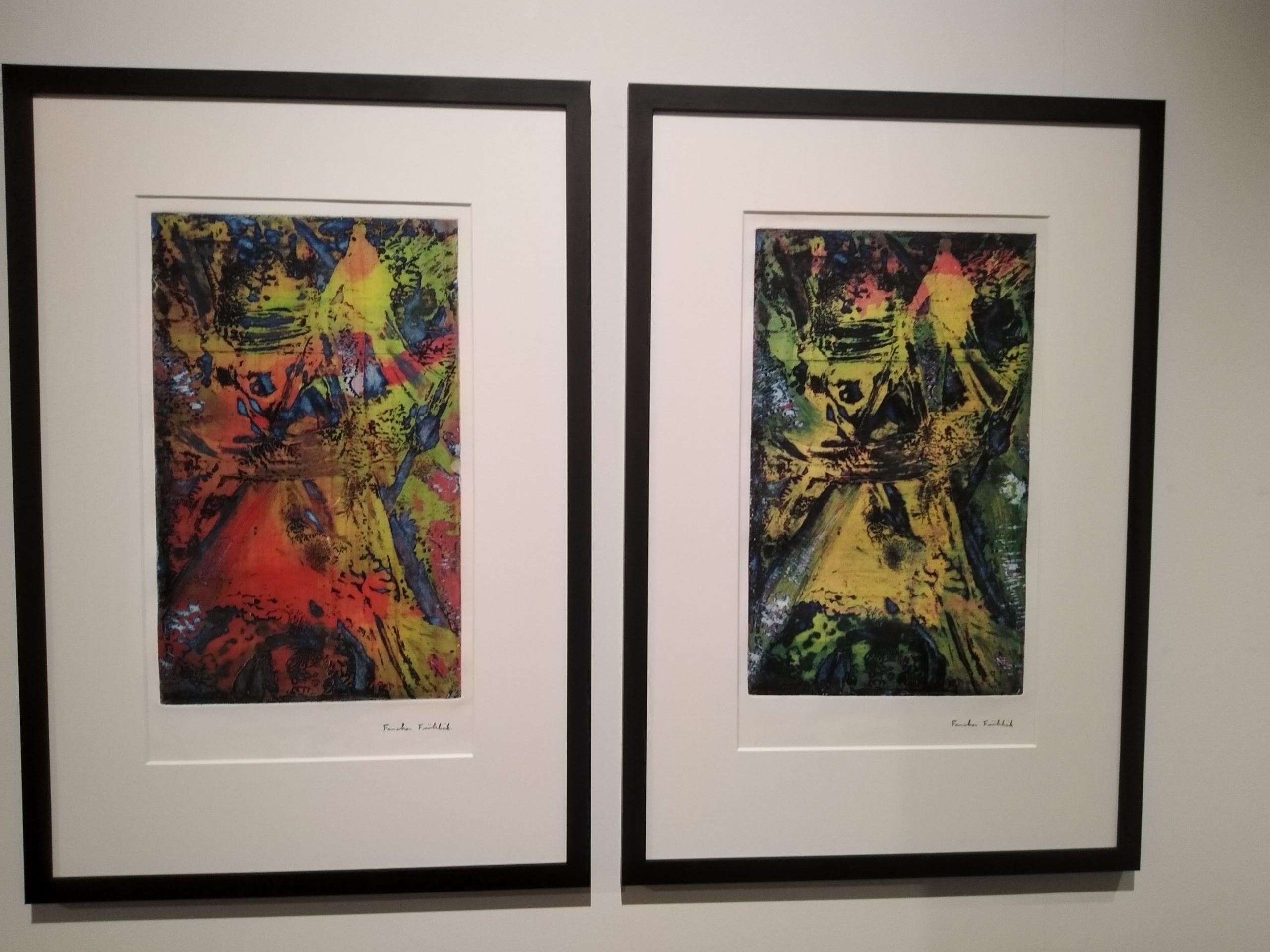
Fröhlich had enjoyed considerable professional success in the 1960’s – exhibiting abstract prints in Paris alongside such giants of the time as Marcel Duchamp and Joan Miró. Her work entered prestigious collections, including the Walker Art Gallery’s, and her academic theories were published by the avant-garde publication, Situationist International. But from the 1980s onwards, Fröhlich’s work began to be overlooked for reasons it’s hard to pinpoint; perhaps something to do with her sex but more likely a combination of factors. Artists, like the art world in general, are in constant motion, constantly mutating their practice.
For Fröhlich it was a move from being a solitary artist into what she came to call Collective Phenomena. These were ‘happenings’ involving several artists (usually female) painting on the same canvas, without speaking, allowing the work to unfold subconsciously, yet with what they described as “a collective will”. These events occupied the last two decades of Fröhlich’s life, combining her artistic fervour with her profound understanding of the unconscious mind.
Examples of these collaborative abstract works can be seen in a separate, smaller gallery, along with a display that explores the printmaking aspect of Fröhlich’s practice. During her time in Paris, she studied at Atelier 17, a renowned experimental arts workshop run by the legendary William Hayter (1901-1988), to which all the international, prominent artists of the time gravitated. Take a look at this evocative video of Hayter below, demonstrating and narrating one of his innovative techniques – his sonorous voice alone is utterly compelling.
Fröhlich’s friendship with Liverpool-based artist Terry Duffy was another source of artistic inspiration, particularly in relation to her Collective Phenomena path. A major work of his, “The Miraculous Draught of Fishes”, exhibited in the 1991 John Moores Painting Prize, is displayed in the exhibition. Duffy is chair of BADA and continues to be instrumental in the conservation and promotion of Fröhlich’s legacy.
Nicola Euston, Head of Museums and Galleries at the University of Liverpool, says a principle aim of the exhibition is to contextualise Fröhlich’s work: “This is the first time it has been seen alongside these major paintings from our own collection by a range of her contemporaries. Her work did not get the recognition it deserved during her lifetime and we hope this exhibition offers more context to her achievements and artistic practice”.
***
“Abstract Thinking: Fanchon Fröhlich and her Contemporaries”, is being shown until 30 March 2024, at the Victoria Gallery & Museum, Ashton Street, Liverpool L69 3DR. Entry is free!
Filed under: Art & Photography
Tagged with: 1960's, abstract, Abstract Thinking, art, art scene, artists, BADA, collective, Collective Phenomena, collective will, contemporaries, dynamic, Fanchon Fröhlich, Gillian Ayres, Jackson Pollock, liverpool, painting, Peter Lanyon, printmakers, printmaking, Sandra Blow, subconscious, Victoria Gallery & Museum, William Hayter
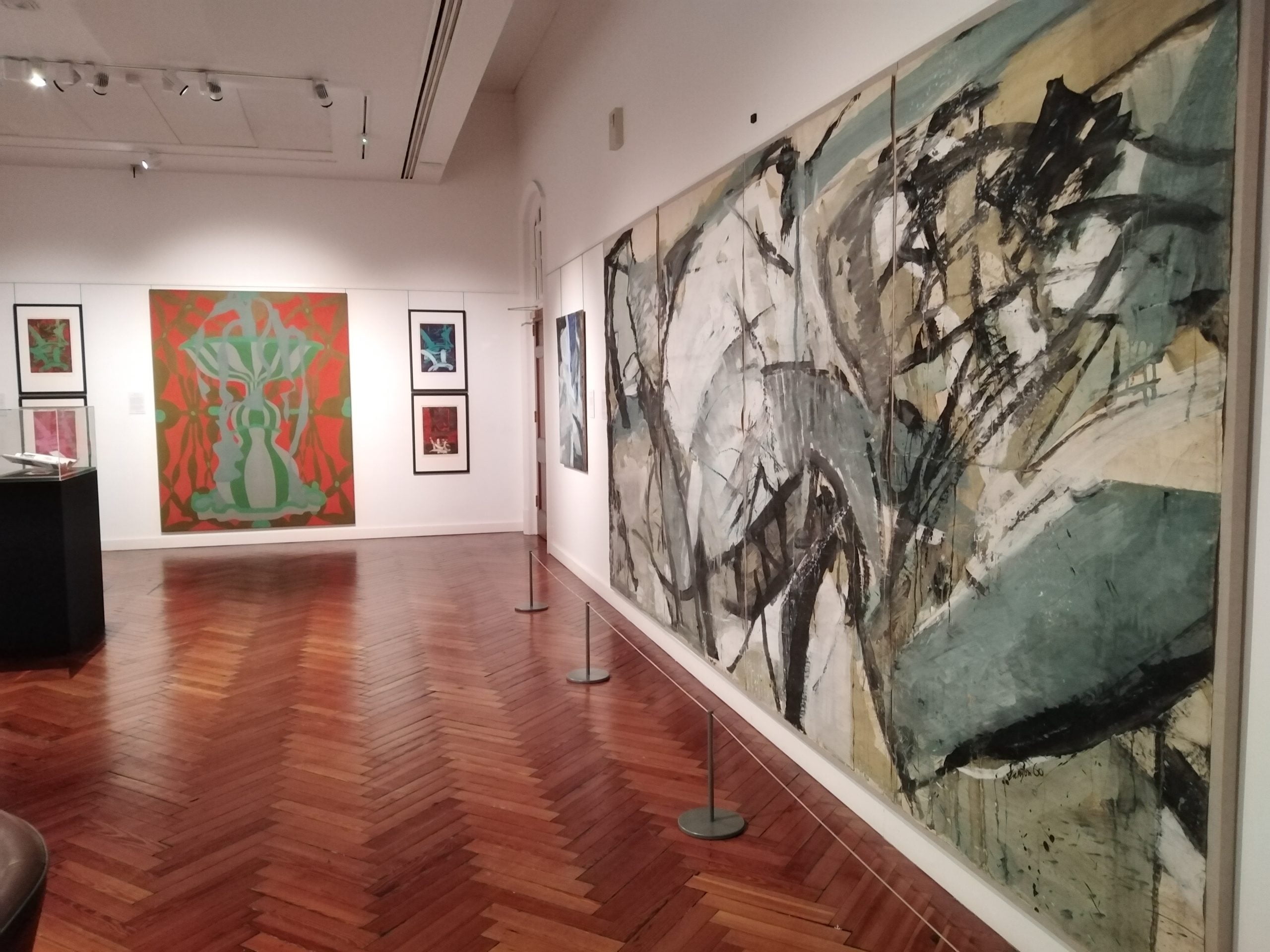
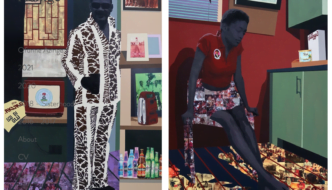

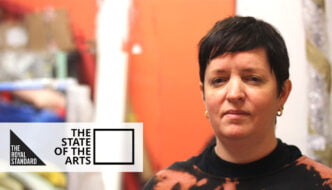
Comments